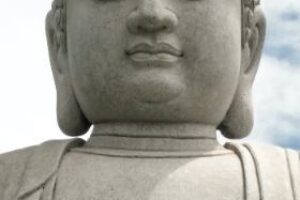In the closing paragraph of last month’s Dharma Byte, I promised that I would finish my commentary on the intersection of Zen and Science as a TO BE CONTINUED
Cliff-hanger:
The latter four Dimensions: Methods Used; Truths Claimed; Goals Pursued; and Conclusions Drawn; will be the subject of next month’s Dharma Byte. If you have any questions concerning the above, or my comments on the next four, please do not hesitate to send them to me. I will do my best to address your concerns.
The central theme of the manuscript is the juxtaposition of Zen with the positions of Rationalism and Theism, their worldview and implications for our society. The chart by which I illustrate this comparison:

The first four Dimensions amount to a brief on the subject Field, its focus and framework as established by its provenance and precedents, or received wisdom. This consists in a body of doctrine, in the case of Theism; philosophies, as well as proven theories and established laws, in the case of Rationalism; and the written record of experience of the ancestors from countries of origin, in the case of Zen.
The latter four move into action in the present, beginning with Methods of training and practice; findings in the form of the kind of Truths claimed in each Field; the recommended objectives of the endeavor, in the form of the ostensible Goals pursued; and some of the Conclusions drawn from the exercise. Let’s examine each in order, focusing on the comparison of Rationalism and Zen, setting aside for now the contrasts with Theism. For those, you can read the book.
THE METHOD USED
It may seem a reach to claim that Zen’s method, zazen, is scientific. While the results may not be measurable in the objective sense—though many studies in areas such as brain science are closing in on this goal—the approach is definitely respectful of the scientific dictum to observe, dispassionately, and let the data flow to us, rather than trying to control outcomes. We also control for variables, such as the influence of the environment, by setting up a temperate, moderate space (the zendo) for the practice of zazen. The sameness of the surround in terms of light, temperature, sound, and even odors, amplifies the differences we experience in the practice of sitting in the same posture—and during sesshin, facing the same wall—for extended periods of time. This relative control of circumstances allows the natural process of adaptation, sensory as well as cognitive, to set into place.
Each time we engage in Meditation, in other words, we are mounting the central Experiment of Zen, once again.
THE TRUTH CLAIMED
In reviewing remarks from several reading groups while developing this text, I was caught off-guard by a professor of philosophy referring to my remarks as “claims.” Further, they amounted to claims that I needed to defend, and he provided some of the more salient counter-arguments. Thus I began to develop a deep respect for the rigor of philosophical argument, and technical criticism, that I had hitherto been blithely unaware of, along with its playing such a critical part in the world of letters and commentary. With the help of this trained academic and others, the text was hopefully improved beyond my somewhat sophomoric level of simply asserting claims without rationale.
Thus, when we claim Identification as a truth of Zen or Buddhism—in the context of Verification in Rationalism, philosophical as well as Scientific—we must include certain caveats in order to confess the limitations of language in capturing experience, as well as those of immeasurable effects. For example, verification in philosophy and Zen experience amounts to mostly a matter of agreement of testimony, rather than physical effects that can be replicated—with certain exceptions, such as those brain experiments aforementioned. Nonetheless, the point is that all the testimony and objective verification in the world is no substitute for direct experience, the sine qua non of Zen.
Buddha’s definition of the Truth of Zen, from which my terms are derived, as a matter of self-identification with the Truth—rather than an objectively measurable truth, via incontrovertible evidence; or one based on belief, devoid of evidence—which he declared to be superior to the two alternatives, is itself an assertion that cannot be confirmed other than by direct experience. Thus, Zen’s nondual grasp of duality cannot be adequately expressed in language, which is inherently dualistic, nor can it be proven a priori. This explains Soto Zen’s reliance on the central method of zazen.
THE GOAL PURSUED
A caveat emphasizing a “major goal” is perhaps called for, in that there are many goals in Zen, as well as the projects of Rationalism, just as there can be said to be many sub-goals in the programs of Theism. Knowledge may be an inadquate choice for Rationalism, as there are others such as Control (e.g. of the environment, including the populace). Vow may be confusing as the goal of Zen, as a vow implies a goal that has not yet been achieved, or even an open-ended approach to existence, sans goals as such. “We vow with all beings, from this life on throughout countless lives, to hear the true dharma,” as Master Dogen expresses it in “Eihei Koso Hotsuganmon” otherwise known as “Dogen’s Vow.”
However, adopting a goal as broad as Knowledge also suggests that today’s wisdom may be contradicted and replaced by future knowledge, as exemplified by the successive revolutions in physics, from Newtonian Mechanics, to Relativity, to Quantum Physics. Revolutions in knowledge call for revolutions of thinking, and even vocabulary, which is true for both Fields. This partially explains the history of revisionism in Zen, where in Buddha’s own original teachings, the “First Sermon” articulates the Noble Eightfold Path, where the “Lotus Sutra,” considered his final public teaching, teaches that actually there is no Path. This seems contradictory when interpreted dualistically, which is the whole point of Zen training—to slip the bonds of dualistic thinking.
However, dualistic thinking is not rejected in Zen, as reflected in a stanza from “Trust in Mind (C. Hsinhsinming)” which reminds us that “To move in the one Way do not reject even the world of senses and ideas; indeed to accept them fully is identical with true enlightenment.” The rational, discriminating mind is, however, seen in perspective of the intuitive, wisdom mind. Zen is a gut-level approach to life. As such, it allows for the irrational. In this view, chaos is a higher form of order. Living by vow in the face of the unknowable unknown is the only rational response.
THE CONCLUSION DRAWN
Side-stepping the faux debate between Creation and Evolution may seem to be a cop-out, but in the text I delve more deeply into this deeply cynical social and political conflict. Suffice it to say that Evolution, branded as a competing belief for the First Cause, is not. It is instead a pattern of natural process, substantiated by massive evidence, more in the realm of How things come to be the way they are, than Why they do so. Again, the Why questions are in the philosophical or religious realm, and when they are not readily answered with credible evidence, they become a Who-class response: God as “Who”.
Co-arising, as a central conclusion of Buddhism and Zen, is not easily explained, nor easily understood. In fact, it is said that if and when you come to truly understand it, the comprehensive model of which is sometimes referred to as the “12-fold Chain of Interdependent Arising,” you understand all of Buddhism. The same may be said of each of Buddha’s main teachings. Stated in its utmost simplicity, that this arises, means that that arises. If this does not arise, that does not arise. If the causes and conditions are favorable, life is manifest in predictable patterns. If disruptive causes and conditions ensue, life may be cut off.
The main premise, as I get it, of this subtle and complex teaching, is that the effort to determine ultimate causality, as a linear model, is doomed to futility. Each cause as identified is also an effect, in an endless regress to a beginningless beginning. Each effect is also a cause, and both causes and effects are seen to be operating in a geometric expansion over time, not a simple, linear cause-effect relationship. In quantum theory, causes and effects can move either forward or backward, without violating the basic principle. This suggests that time itself does not necessarily require an arrow pointing in one direction only.
The twelve links in the Twelvefold Chain—Ignorance, Mental Formations, Consciousness, Name and Form, the Six Senses, Contact, Sensation, Perception, Craving, Clinging, Becoming, Birth, and Aging and Death—are all interlinked to each other, though they seem to manifest in an orderly unfolding of growth of the sentient being over time. Ignorance, the first link, can be reverted to at any point in the process. (If you count 13, you are correct – Perception is not usually included.)
Co-arising, like the theory of Evolution, is not a contender for First Cause, competing with the Big Bang, or the Word of God. It is not a belief, but evidenced by the manifold interaction of environmental and natural influences upon the present reality. The constant flux of change witnessed in natural as well as social contexts may appear as chaos, but upon closer examination, is revealed to be an elegant, interactive play of self-fulfilling and self-regulating causes and conditions. The outcomes may not privilege human survival, however, so do not pass the litmus test of the actions of a benevolent, human-centric God.
In summary, Zen thinking finds no disagreement with Rationalism or Science, except perhaps in their most extreme speculations. Theism or Religion, and some forms of philosophy, offer more opportunities for debate, owing to the lack of evidence for claims made, and insistence on inerrant authority. Thus, Zen in general leans toward the scientific side, and away from religiosity.
However, Zen does not take the reductionist-materialist approach to presuming no underlying mystery, even to those things we think we can know, predict, and even demonstrate. Some questions do not have answers, to paraphrase a famous quote. In Zen, the answer to the present question may be a deeper question. In this, I think the Zen quest finds commonality with the scientific quest. But Zen is more personal, including the observer as a necessary part of the equation.









